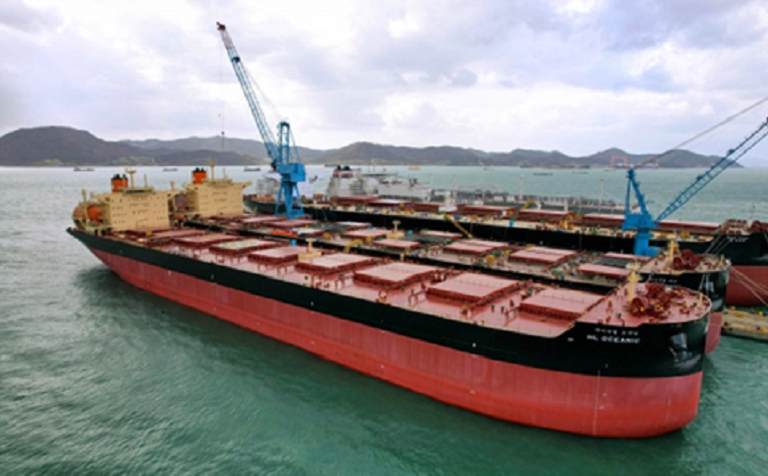Hyundai Steel plans to spearhead carbon reduction by replacing its fleet of raw material carriers with eco-friendly ships.

Hyundai Steel announced on Nov. 24 that it has started to operate its first eco-friendly raw material carrier, “HL Oceanic,” which was built by Hyundai Samho Heavy Industries in Mokpo, South Jeolla Province. The Oceanic is an 180,000-ton LNG-powered ship. The carrier left the shipyard for Australia. It will transport 2 million tons of iron ore and coal annually. In March next year, the HL Sunny, the twin ship of the Oceanic, will be delivered.
The International Maritime Organization (IMO) is tightening environmental regulations to reduce carbon dioxide and sulfur oxide emissions from ships. As a result, LNG-powered ships have been on the rise. Their number increased from 72 in 2014 to 103 in 2016, 145 in 2018 and 220 in 2021. For now, LNG is the most practical eco-friendly fuel.
LNG can reduce emissions of sulfur oxide, nitrogen oxide and carbon dioxide by 99 percent, 90 percent, and 30 percent, respectively, compared to conventional high-sulfur vessel oil. It can boost fuel efficiency by more than 30 percent. Countries such as Korea, European countries, China, and Singapore are moving to preempt the LNG propulsion ship market.
Hyundai Steel will replace the remaining raw material carriers with eco-friendly ships. Starting from March 2022, 31 percent of the steelmaker’s raw material carriers will be loaded with desulfurization devices, and 15 percent will be replaced with LNG-powered ships.